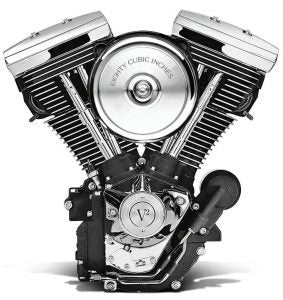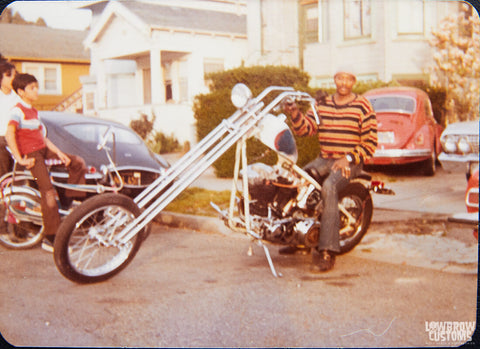TABLE OF CONTENTS
For more than 100 years, Harley-Davidson has been producing its legendary lineup of Harley engine models by year. Through the decades, various engine specifications and technological advances have led the company to develop nine different types of basic Harley-Davidson engine types.
What Makes a Harley-Davidson Engine Different?
New Harley-Davidson engine designs arrive about every 15 years. Since 1936, the Harley engine years and designs released by Harley represented classic forms that the Harley-Davidson engine lineup has taken: Knucklehead, Panhead, Shovelhead, Evolution, Twin Cam, and the very large single-cam Harley motors, each with specific Harley-Davidson engine specifications.
A Harley engine represents classic motorcycle engine configurations. Both pistons in these Harley motors are connected to a single crankshaft through their connecting rods. With the Harley-Davidson engine displacement in a V configuration, the pistons cannot fire at even intervals.
Each piston in the Harley-Davidson engine types fires on every other rotation of the crankshaft and with the spark plugs at 180° from each other; this motorcycle engine evolution provides the smooth, even rhythm sound characteristic of Harley engines.
1911 - 1929 F-HEAD (61-74ci / 1000-1210cc)
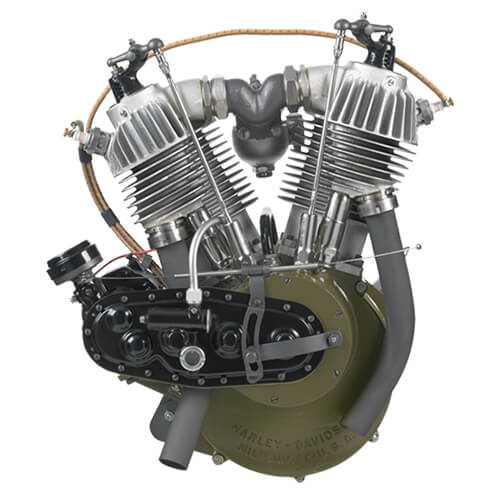
The original Harley Big Twin engines, the F-Head models were IOE, or intake/inlet over exhaust- type motors. These simple yet powerful engines were available in 61 cubic inch and 74 cubic inch sizes, and were produced from 1914 through 1929.
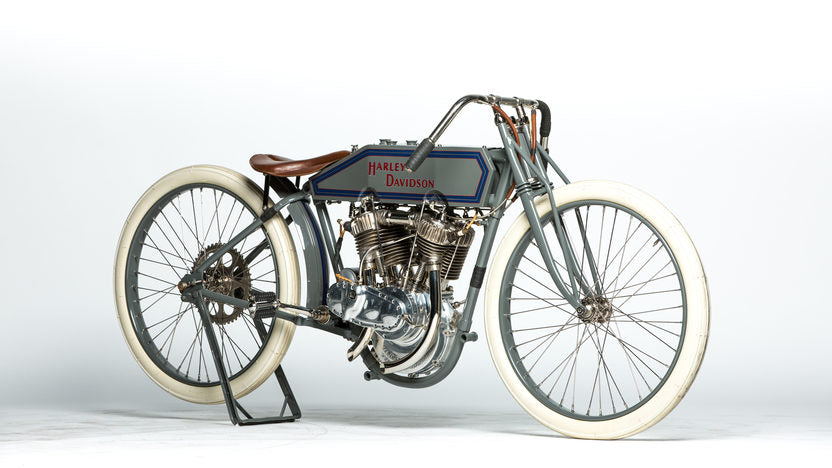
- 1915 Harley-Davidson F-Head.
1929 - 1973 FLATHEAD (45-74ci / 737-1212cc)
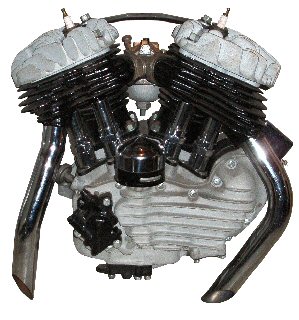
- Harley-Davidson Flathead.
Named for its flat-topped, vented cylinder heads, the side valve-equipped 45 cubic inch flathead engine debuted in 1929, and the 74 cubic inch V model Big Twin came out in 1930. In Harley Davidson Flathead history, the Big Twin model was built in part to compete with the 74 cubic inch Indian Chief. In 1937, the U series of Harley-Davidson flathead Big Twin engines made their debut, replacing the V series.
The U and UL models featured 74 cubic inch powerplants, and the UH and the ULH models were outfitted with 80 cubic inch engines. The 80 cubic inch models were produced until 1941, and the 74 cubic inch U and UL models were in production until 1948. The three-wheeled Harley-Davidson Servi-Cars made from the early 1930s through 1975, were powered by flathead engines during their entire run of production.
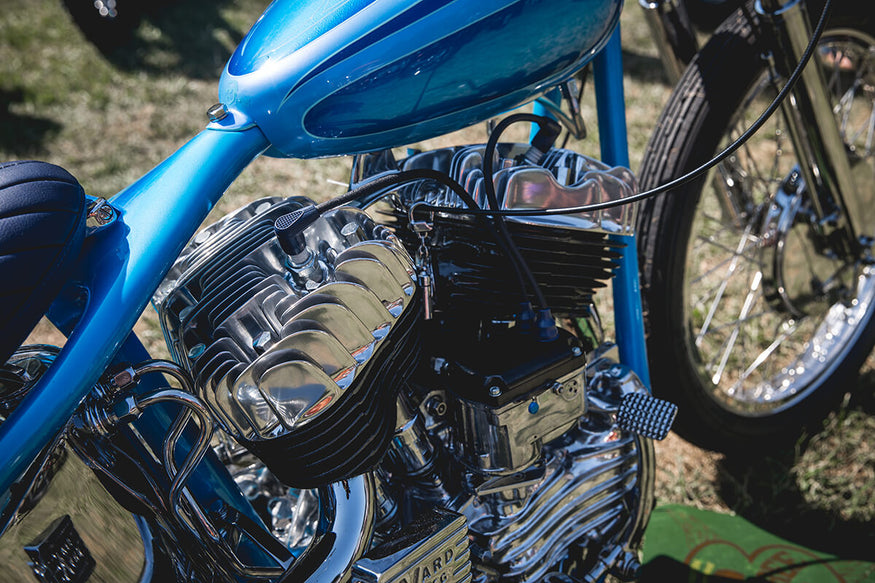
- Jeff Leighton's 1942 Harley-Davidson Flathead.

- Jeff Leighton's 1942 Harley-Davidson Flathead at Born Free 8.
1936 - 1947 KNUCKLEHEAD (61-74ci / 983-1212cc)
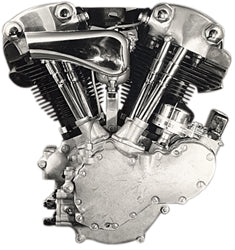
- Harley-Davidson Knucklehead. 1936-1947
Made from 1936 through 1947, the Harley-Davidson Knucklehead motor was Harley's first production bike to have overhead valves. A more-efficient circulating oil lubrication system on the knucklehead replaced the "total-loss" lubrication system that previous models featured. Why is it called a Knucklehead? Also known as the EL model, the knucklehead got its name from its rocker boxes that looked like knuckles on a human fist. Both 61 cubic inch and 74 cubic inch models of this Big Twin engine were produced by Harley-Davidson.
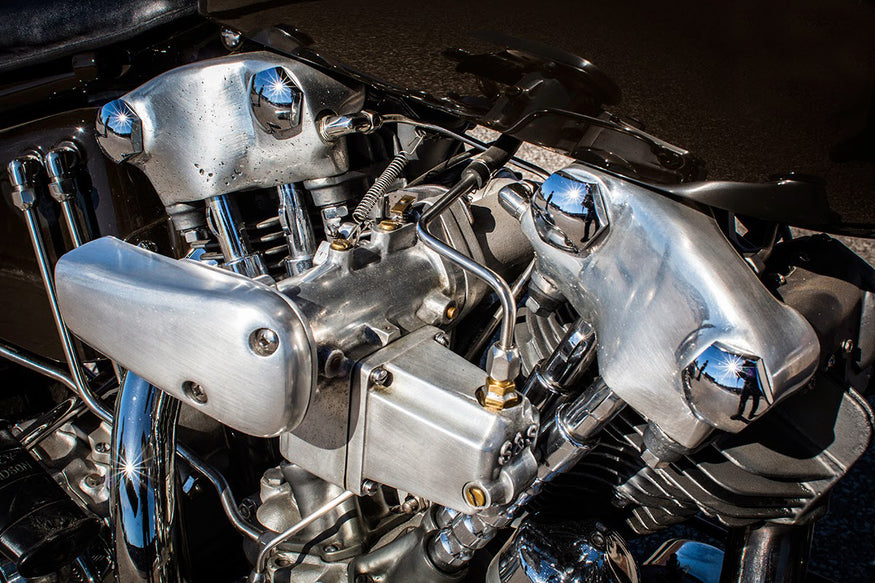
- Details on Jesse Basset's Knucklehead - The Gasbox.
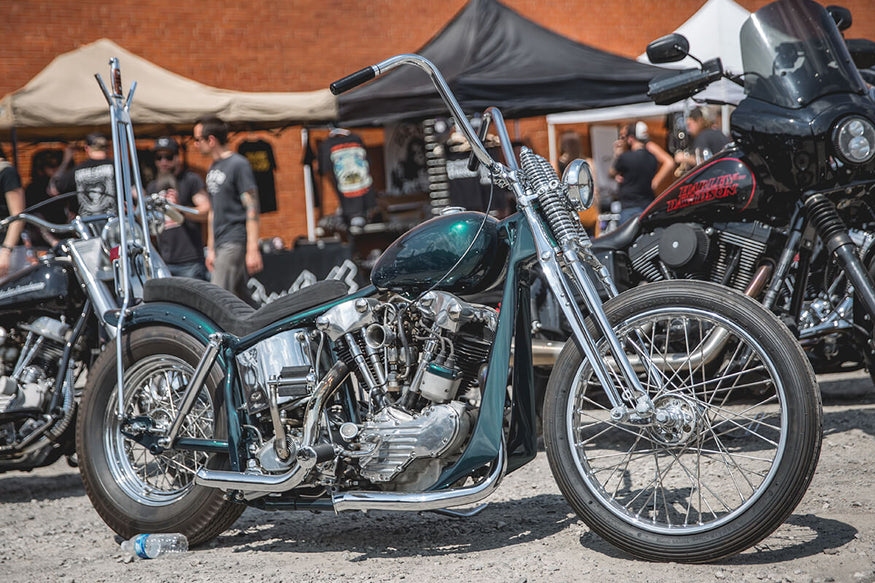
- Buddy Miller's 1947 Knucklehead.
1948 - 1965 PANHEAD (61-74ci / 983-1212cc)

- Harley-Davidson Panhead. 1948-1965
This Big Twin engine gets its name from the distinctive cake pan-like appearance of the rocker covers. Available in 61 cubic inch EL and 74 cubic inch FL and FLH models, this engine was produced from 1948 through 1965.
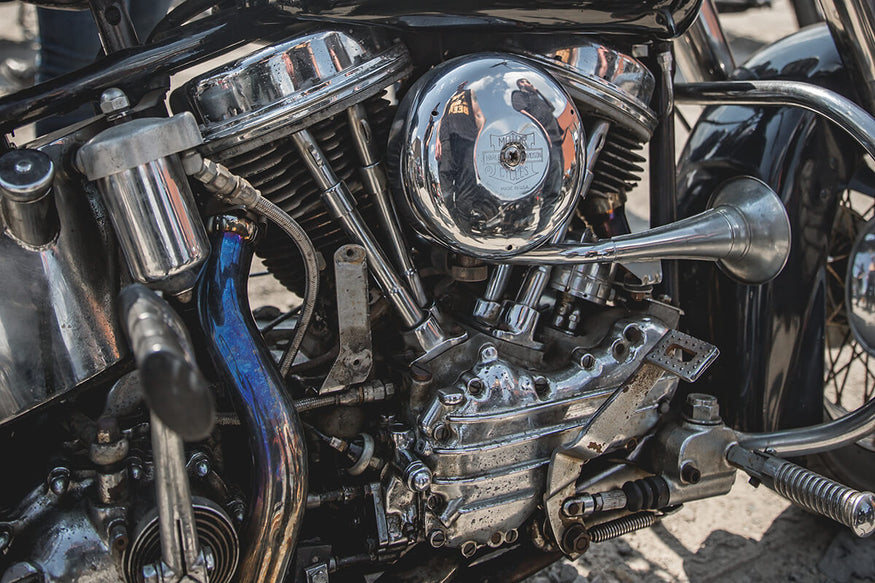
- Detail shot of Kerry Sayre's 1959 Duoglide.
The Harley-Davidson Panhead was equipped with aluminum heads and hydraulic valve lifters, and the 1965 Electra Glide model brought about the introduction of electric starters on Harley-Davidsons. The Panhead is widely considered to be the most attractive of all Harley-Davidson Big Twin engines.
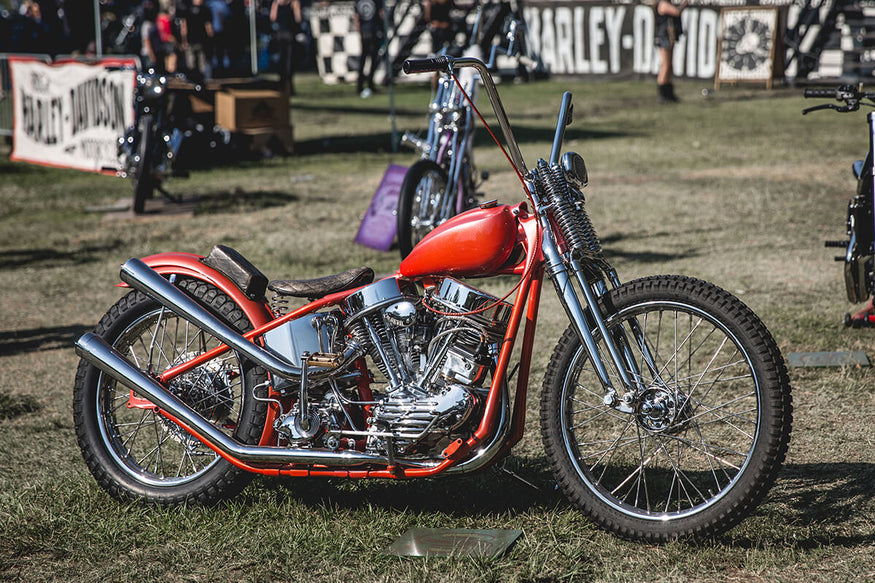
- Max Schaaf's Harley-Davidson Panhead.
1966 - 1984 SHOVELHEAD (74-82ci / 1212-1343cc)
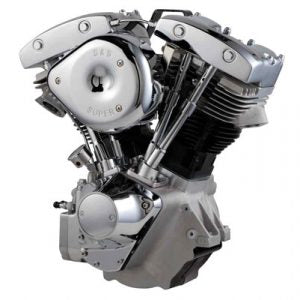
- Harley-Davidson Shovelhead. 1966-1984
Produced from 1966 until 1984, the Harley-Davidson Shovelhead engine was available in 74 cubic inch and 80 cubic inch models, playing a significant role in defining the look and feel of 70s Harley Davidson machines. The Shovelhead was designed in part to produce more power and higher performance to make up for the increased weight of new Harley-Davidson motorcycle models.
This 1966 Harley-Davidson model for Big Twin also gained its name because of the appearance of the rocker covers. Somewhat resembling the knucklehead, the slightly rounded Shovelhead rocker box covers are reminiscent of small shovels, with the push rod tubes serving as handles.
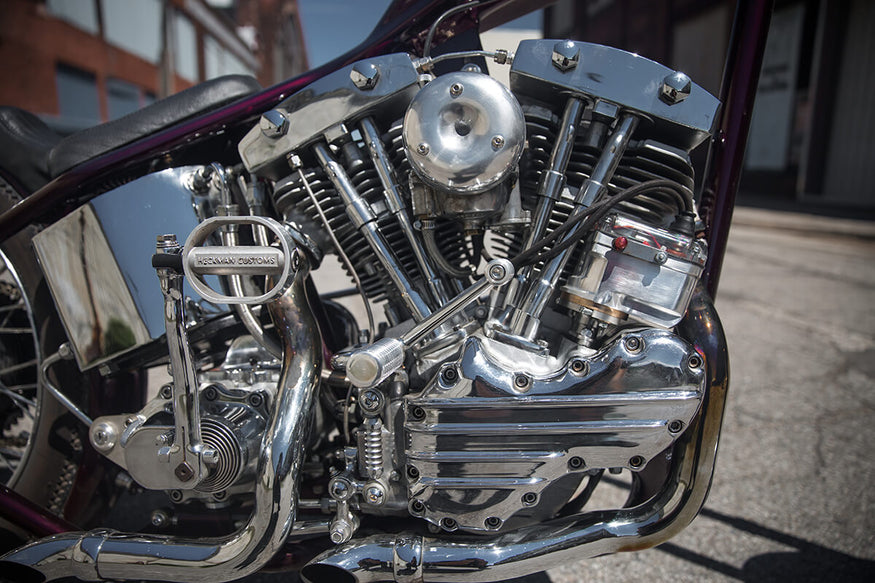
- Detail shot of Bob Millerleile's PanShovel.
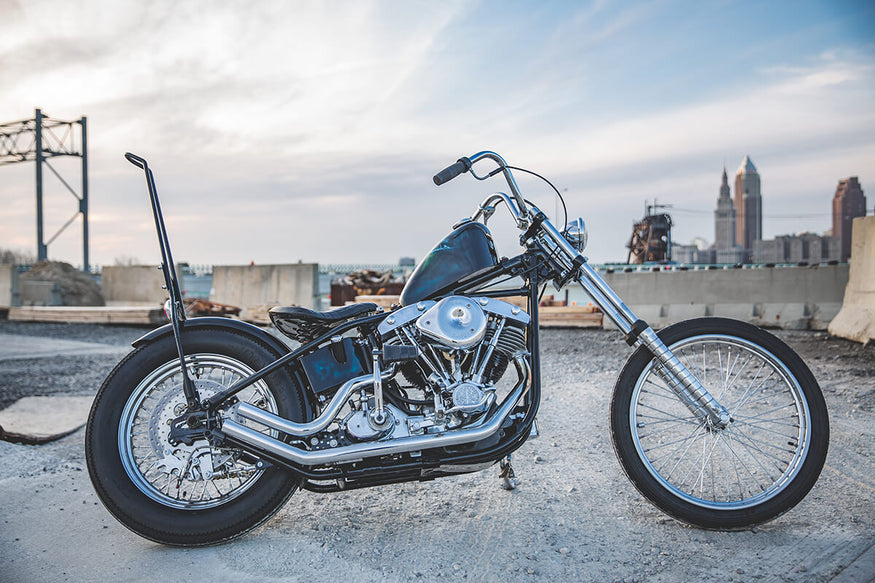
- Mikey Revolt's 1977 Harley-Davidson Shovelhead.
1984 - 1999 EVOLUTION (80ci / 1343cc)
- Harley-Davidson Evolution. 1984 -1999
With the Evolution of the Harley-Davidson engine, Harley-Davidson had an engine that not only evolved from the Shovelhead, but was very different, and technically superior in a number of ways. The Harley-Davidson Evo was not only more powerful, but it ran cooler and smoother than the Shovelhead. The 80 cubic inch Evolution motor was produced between 1984 and 1999.
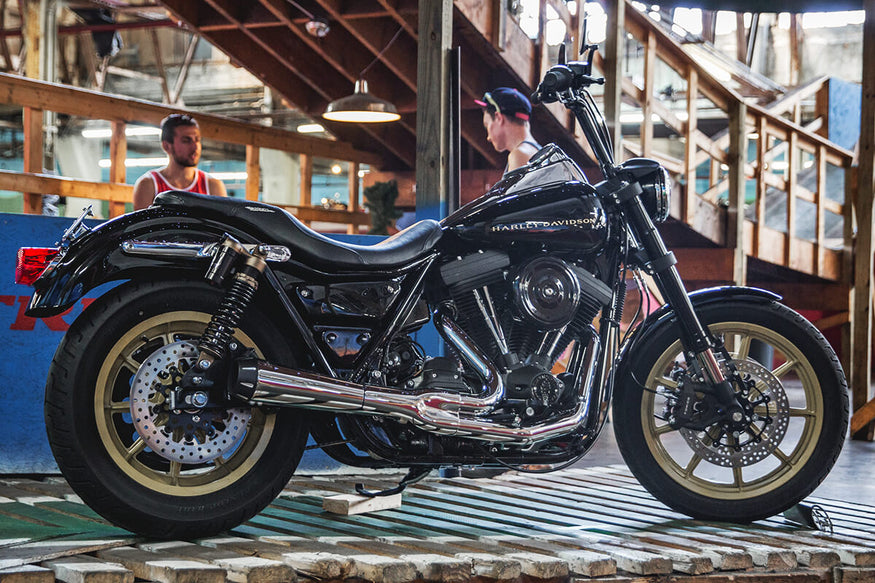
- Tim Stat's Harley-Davidson 1992 Evolution FXR at Fuel Cleveland 2016.
1999 - 2016 TWIN CAM (88-103ci / 1442-1687cc)
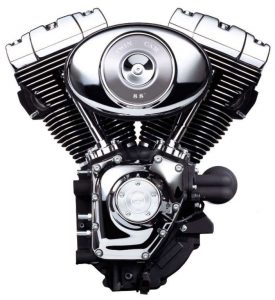
- Harley-Davidson Twin Cam.
In 1998, Harley-Davidson introduced the eighty-eight cubic inch Twin Cam engine for the 1999 model year, and continued production of different Twin Cam models until 2016. A 96 cubic inch Twin Cam model, as well as a 103 cubic inch, and a 110 cubic inch model were also produced. This model was named for the two chain-driven cams it contains. The Twin Cam 88B engine was a counter-balanced Twin Cam 88 motor that was designed to fit Harley-Davidson Softail models.
The Twin Cam engine provided more torque and horsepower than the Evolution model, and was originally available with a choice of carburetor or fuel injection. What's the difference between a Twin Cam and Evo? Issues with oil circulation on the Harley evolution engine prompted Harley-Davidson to outfit the Twin Cam with a better-performing internal twin-gerotor oil pump.
The Twin Cam motor offered higher compression than its predecessor, and a dual-coil ignition system that eliminated wasted spark. In contrast, the Evolution’s legacy had been well-established in Harley Davidson sportster models by year, marking an ongoing evolution in design and performance since 1957.

- Norm Betts on his Twin Cam at Fuel Cleveland.
2001 - 2017 REVOLUTION (69-76ci / 1131-1247cc)

- Harley-Davidson Revolution.
In place of the familiar 45-degree V-Twin engines that Harley is known for, the Revolution engine is a liquid-cooled 60-degree V-Twin powerhouse. This engine has been standard equipment on Harley-Davidson's cruiser/muscle bike, the VRSC, or V-Rod since 2001. Originally available as a 69 cubic inch dynamo, the Revolution was beefed-up to 76 cubic inches in 2008. You wonder what is the biggest Twin Cam Harley engine?
Designed to provide competition to both imported and domestic popular street/cruiser bikes, the Revolution engine is actually a collaborative effort between Harley-Davidson and Porsche. A mere 30 cubic-inches (491.6 cc) of the liquid-cooled 60-degree V-twin on the Street 500 is the smallest production engine from Harley to this point.

- Vrod 2016 model.
Since 2017 MILWAUKEE-EIGHT - WAFFLEHEAD (107-117ci / 1746-1923cc)

- Harley-Davidson Milwaukee Eight-Wafflehead.
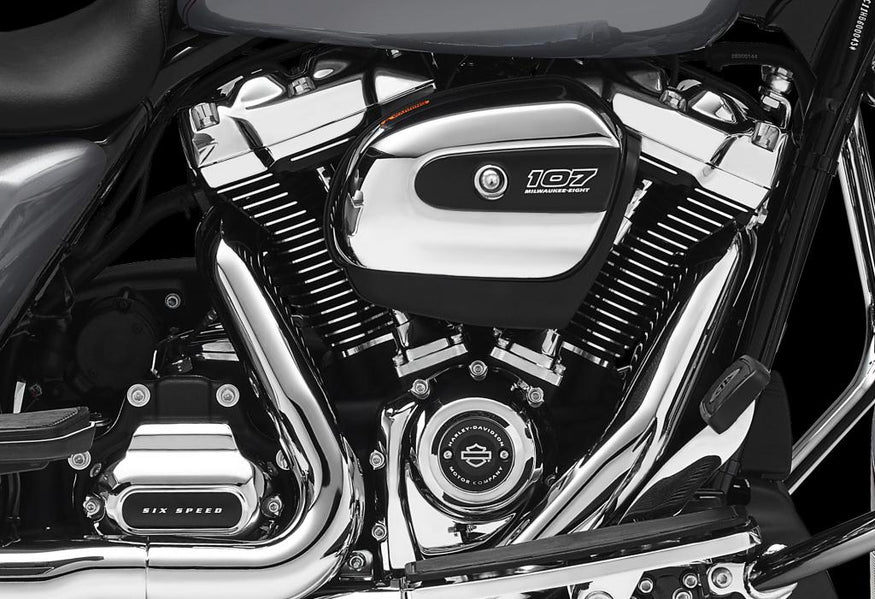
The Milwaukee-Eight engine features Harley's traditional 45-degree V-Twin design. The engine provides more torque and overall power than previous models, and is counter-balanced to reduce vibration. Following the naming conventions of earlier engines (Knucklehead, Panhead, Shovelhead), the Milwaukee-Eight has been nicknamed Wafflehead due to the valve covers resembling waffle irons.
Each cylinder utilizes two spark plugs, and each cylinder head contains four valves, that increase the capacity of the intake and exhaust flow. A development objective of providing a cooler-running machine, has been achieved by the inclusion of an improved heat management system.
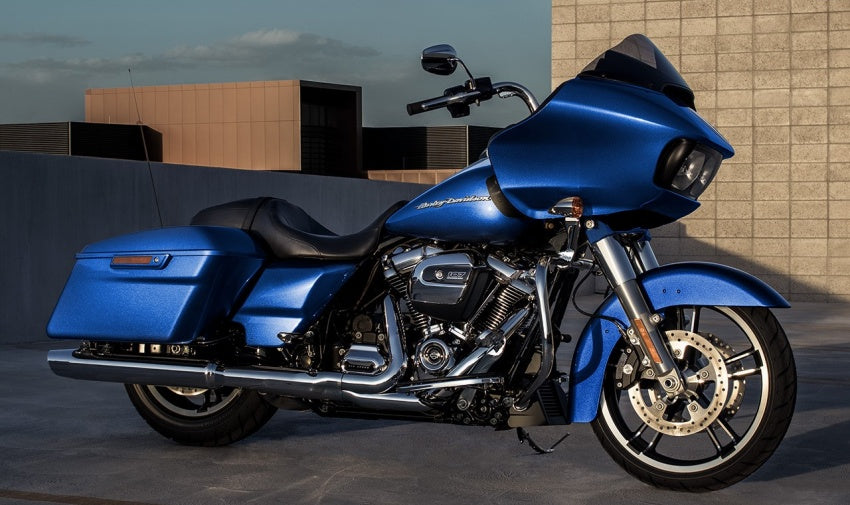
- It's not a chopper yet...
The various types of Big Twin engines manufactured by Harley-Davidson through the years have revolutionized the motorcycle industry. If history is any indicator, Harley-Davidson will continue to blaze new paths with these amazing engines well into the future.



